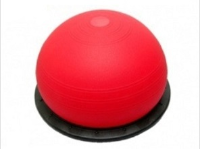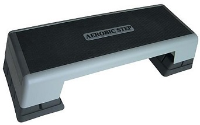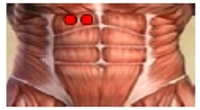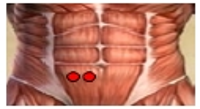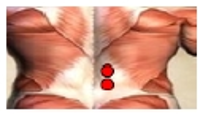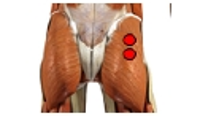PURPOSE This study aimed to understand the changes in the exercise behavior of participants in the exercise-psychological counseling program. METHODS This study sampled adult female participants of C diet camp in Seoul, who were in stages 2~3 of the “Stages of Change Model.” A total of 60 participants were randomly assigned to the counseling group (n=30) and control group (n=30). During the 12 weeks of study, all subjects participated in the diet camp program C. The counseling group participated in the exercise psychological counseling program once a week, while the control group participated in recreational activities instead. Exercise adherence, outcome-expectancy, and satisfaction were measured once every four weeks. Latent growth models were used to analyze the measured data. RESULTS Exercise adherence, outcome-expectancy, and satisfaction in the counseling group exerted a statistically significant positive effect. A statistically significant positive effect on the change of exercise adherence variable was observed in the control group, but the trend was only 1/4 of that of the counseling group. In the control group, exercise outcome-expectancy and exercise satisfaction did not have a statistically significant outcome. CONCLUSIONS The exercise counseling program is an essential intervention strategy that enhances participants’ exercise adherence, outcome-expectancy, and satisfaction. Therefore, a positive change in exercise behaviors occurs.

Purpose The purpose of this study is to emphasize the need for the establish and the use of altitude training center via examining exercise training method in natural or artificial altitude environment that is applied to various elite athletes in various advanced countries to maximize exercise performance and its effectiveness. Results Altitude training in natural or artificial altitude environment enhances aerobic and anaerobic exercise performance baesd on the hematological and nonhematological adaptations to hypoxic conditions. These altitude training methods can be classified into living high training high (LHTH), living high training low (LHTL), and living low training high (LLTH). LHTH (i.e., developed since the 1968 Mexico Olympics) and LHTL (i.e., developed in the 1990s by Levine and Stray-Gundersen) improve exercise performance via hematologic changes through erythropoiesis such as increased hemoglobin mass and erythrocyte volume. On the other hand, LLTH (i.e., has been developed variously since the 2000s) is composed continuous hypoxic training (CHT), intermittent hypoxic training (IHT) and repeated sprint training in hypoxia (RSH), and the altitude environment is constructed using a vacuum pump and a nitrogen generator. In general, LLTH method dose not induce hematological change in a short time within 3 hours. However, CHT and IHT enhance aerobic exercise capacity by improved exercise economy, supply and utilization of blood to tissues, capillary and mitochondrial densities, and oxidative enzyme activity through various biochemical and structural changes in skeletal muscle and cardiac muscle. RSH enhances anaerobic power and repetitive sprint performance by improving glycolytic enzyme, glucose transport, and pH control. In Korea, however, there are almost no facilities for altitude training that is applied to enhance athletic performance in advanced sports countries and recognition of the need for altitude training is also very poor. Conclusions Therefore, it is very urgent to develop altitude training for maximizing athletic performance in Korea and a lot of support and efforts are needed from the government and local governments.

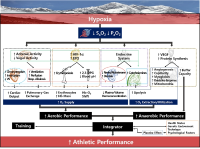

PURPOSE This study aimed to investigate the effects of continuous exercise and the accumulation of short-duration exercise for 12 weeks on body composition, physical fitness, and lifestyle disease indices in overweight men in their 30s. METHODS Participants in the continuous exercise group (CE; n=13) performed a circuit exercise program of 30 min/session, 3 sessions/week for 12 weeks. Participants in the accumulation of short duration exercise group (ASE; n=12) performed the same exercise time of 30 min per day, divided into three sessions of 10 min. Body composition, physical fitness, and lifestyle disease indices were measured pre- and post-test and were compared by utilizing a repeated two-way ANOVA. RESULTS 1) Regarding body composition, body weight, body mass index, skeletal muscle mass, waist circumference, and fat mass decreased significantly, while hip circumference increased significantly in the CE group. Waist circumference and skeletal muscle mass decreased significantly, while hip circumference increased significantly in the ASE group. 2) Regarding physical fitness, right grip strength, sit and reach, sit up, and maximal oxygen uptake increased significantly in both groups. 3) Regarding hypertension indices, there were no significant differences in both groups, but they showed a tendency to improve. 4) Regarding hyperlipidemia indices, triglycerides (TG) decreased significantly in both groups, and total cholesterol (TC) decreased significantly in the CE group. 5) Regarding diabetes indices, there were no significant differences in both groups, but a tendency to improve was noticed. 6) Regarding arteriosclerosis indices: TG/high density lipoprotein-cholesterol ratio decreased significantly in both groups, and the TC/high density lipoprotein-cholesterol ratio decreased significantly in the CE group. CONCLUSIONS We concluded that both the accumulation of short duration exercise and continuous exercise can be effective in improving body composition, physical fitness, and lifestyle disease in overweight men.
Purpose The purpose of this study is to analyze the performance contents of men's floor exercise and to provide basic materials for achieving excellent results at world competitions. Methods Teams ranked 1 - 12 who participated in the World Championships' floor movement group competition selected a total of 59 players by the convenience sampling method and carried out technical statistics, frequency analysis, member variable variance analysis, and post hoc analysis. Results First, as a result of frequency analysis of the difficulty of each group, all the teams ranked 1 to 12 liked the most difficulty of C and found that they do not like the F difficulty the most. Secondly, there was a difference in average for each group's start score, ranking 1st to 4th> 5th to 8th> 9th to 12th place. Thirdly, there was a difference in average of difficulty levels for each group B, C, E, and it became very significant with E difficulty.Results of post hoc analysis B difficulty (9th to 12th> 1st to 4th, 5th to 8th), C difficulty (9th to 12th> 1st to 4th), E difficulty (1st to 4th> 5th to 8th ·9th to 12th). Conclusion These results show that in floor exercise, the art of more than C difficulty and the connection technology of A, B, C, difficulty, E and F, difficult difficulty such as difficulty, creative and dynamic performance composition is excellent It clearly states that it is a condition for getting results.
Purpose Sperm quality and function are reduced by environmental factors (e.g., obesity), leading to increased infertility worldwide. Therefore, the purpose of this review paper was to investigate the effects of obesity and exercise training on sperm quality and function in animal and human models. Methods In order to determine the effects of obesity and exercise on sperm quality, motility, morphology, testosterone, oxidative stress, inflammation, we reviewed previous literatures with MEDLINE, PubMed, and Scopus databases. Results The most important factor to control the sperm motility is calcium ion, which is performed by the protein of CatSper (Cation Channel of Sperm). Obese men showed the decrease of number, concentration, motility, and volume in sperm, resulting in delayed or failed fertility. However, regular exercise training increased sperm-mediated factors including number, motility, and morphology, and festicular function-mediated factors including sperm concentration and serum testosterone. Conclusions While obesity exacerbates sperm quality and function in men, regular exercise training with moderate intensity increases sperm number and motility and reduces oxidative stress and inflammation, leading to the improvement of men’s fertility.

The purpose of this study was a investigate the endothelial function of prehypertensive during dynamic exercise. Hypothesis of this study was to impair the endothelial function in prehypertensive compared to normtensive during dynamic handgrip exercise. Eleven healthy prehypertension (24±2 yrs) and ten healthy normotensive (25 ± 2 yrs) were recruited in this study. Participants were performed dynamic handgrip exercise in one contraction per second at 30% of maximum voluntary contraction for three minutes. Vascular (blood vessel diameter, blood flow) and cardiar response (stroke volume, heart rate and cardiac output) were measured at rest and during exercise. Flow mediated dilation (FMD) was decrease significantly in prehypertensive less than normotensive (p<0.05) at rest, and vasodilation of prehypertensive was reduced significantly less than normitensive during exercise (p<0.05). All the cardiovascular responses were aot significantly different at rest and during exercise between prehypertensive and normotensive. These results suggest that endothelial function is impaired in prehypertensive compared to in normotensive

Circadian rhythm (CR) is an intrinsic process that changes in a cycle of approximately 24h/day to maintain body homeostasis. It is mainly controlled by the central command through the suprachiasmatic nucleus, and modern society features can disturb the central CR, contributing to various diseases. Recent studies have provided evidence that extrinsic factors, such as regular physical activity (RPA) and timerestricted feeding (TRF), can also alter the CR peripherally, emphasizing RPA and TRF as the non-therapeutic methods for circadian misalignment (CM). Therefore, this review scrutinizes the regulatory mechanism of CR and summarizes the relationships between CM and various diseases. In addition, by reviewing studies investigating the prevention or improvement of CM via RPA and TRF, the value of circadian biology research that can directly affect health, physical function, and lifespan is summarized. By introducing the scientific evidence for RPA and TRF to maintain and improve CR, we tried to emphasize the importance of regular exercise and healthy eating habits to people in the modern world who have difficulty maintaining CR.
Purpose The valuable impacts of exercise-intervention in diverse type of cancer patients were rationally well-prescribed, though many experimental and review researches already performed in this fields. Generally, cancer-related fatigue and pain remains one of the most prevalent problems for cancer populations. Therefore, exercise has become increasingly significant in cancer prevention and progression. The purpose of this recent study was to analyze the combined exercise program on cancer-related fatigue, pain, quality of life and cancer prognosis in diverse type of cancer patients. This study analyses the safety and feasibility of exercise intervention in diverse stages of cancer patients such as early stage, advanced stage and even metastatic periods in cancer populations. we also wanted to know the impacts of dose-response trial of aerobic and resistance exercise on quality of life in cancer survivors. Methods we conducted a comprehensive PubMed/MEDILINE electronic database from Jan 2015 to August 2020. The reference lists of eligible experimental research articles and relevant systemic review articles were checked. Inclusion criteria were adult cancer survivors from randomized controlled trials performing well-tailored exercise intervention programs to diverse type of cancer patients, Using predefined search items ‘exercise-intervention, cancer & immunology’. Based on reference search, more than 100 articles were identified whereas 30 research papers met the inclusion criteria and were well connected with exercise-intervention and cancer progression. we analyzed the connections between physical exercise and cancer intervention in the main text. Results Moderate to vigorous exercise (aerobic and resistance exercise) revealed to decreased level of cancer-related fatigue, pain, and cancer-related symptoms, however increased level of sleep quality, activities of daily living, exercise performance and health- related quality of life. Exercise intervention reduced pro-inflammatory markers and oxidative stress as well as insomnia, fatigue, pain symptoms whereas it enhanced the antioxidant systems and immune functions. In addition, home-based aerobic physical exercise might enhance muscular strength and quality of life in many types of cancer survivors. Psychological intervention also effective for reducing cancer-related fatigue and pain during and after cancer treatment. they might be the much better intervention than available pharmaceutical options. we believe that it is the related mechanisms of immune cell mobilization and activation such as NK cells which is induced by the activation of sympathetic system during and after physical exercise. Conclusion According to the aforementioned results, it was concluded that implementation of exercise intervention appear to be the best non-pharmaceutical interventions for cancer populations, and also revealed to be safe and feasible in early and advanced stages, although not in the metastatic periods. Sometimes, psychological intervention such as mindfulness-based stress reduction (MBSR) might be useful in reducing anxiety, depression, fatigue, pain and enhancing quality of life, quality of sleep for cancer populations. we can conclude, exercise-intervention might not just be prevention effect but might be therapeutics, however more studies are urgently needed to confirm the exercise intervention on the NK-receptors activation and immune connection of cancer populations.
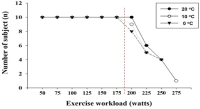
Purpose This study aimed to investigate the effects of acute cold stress (10℃, 0℃) compared with ordinary temperature (20℃) on exercise performance and physiological response at rest and during exercise. Methods A total of 10 healthy men (21.55 ± 2.16) were selected. In each environmental condition (20℃, 10℃, 0℃), the three testing order was randomly selected at crossover, and there was a week interval between the graded exercise test (GXT). On the testing day, they remained resting for 30 min in each environmental condition. Dependent variables (body temperature, energy metabolism parameters, skeletal muscle oxygenation profiles, and exercise performance parameters) were measured at rest and during GXT. Results In body temperature, at each environmental condition, there was a significant decrease (p<.05) at 10℃ and 0℃ compared with 20℃ after exercise, and in the difference depending on the environment at rest. After exercise, the body temperature significantly decreased (p<.05) in proportion to the decrease in temperature. There was no difference in heart rate and blood lactate level in energy metabolism, and the respiratory exchange ratio was significantly higher (p<.05) at 0℃ than 20℃. Minute ventilation (VE), oxygen uptake (VO2), and carbon dioxide excretion (VCO2) were significantly lower (p<.05) at 0℃ than 20℃ and 10℃ at various exercise load. All skeletal muscle oxygenation profiles did not show significant changes at rest and during exercise. In exercise performance, maximal oxygen uptake was significantly lower (p<.05) at 0℃ than 20℃, and exercise time to exhaustion was also significantly lower (p<.05) at 0℃ than 20℃ and 10℃. Conclusion Acute cold stress induces deterioration of exercise performance via a decreased body temperature and an increase in VE, VO2, and VCO2 during the same exercise load. In addition it was confirmed that this phenomenon was more prominent at 0°C than at 10°C when compared to 20°C.

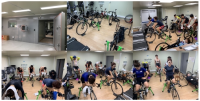

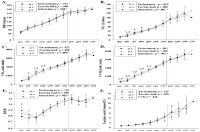
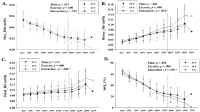
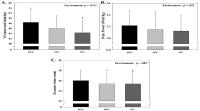
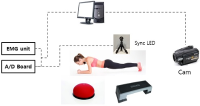
Purpose This study was to analyze and compare series of muscle activities during plank exercises with use of togu-jumper. Methods Ten male subjects (age 26.9±1.7 yrs, height 172.2±5.7 cm, weight 66.5±7.5 kg) who have no musculoskeletal disorder with one's upper or lower limb were selected as subjects. To analyze and compare series of muscle activity, five of surface EMG electrodes were attached to the upper rectus abdominis (URA), lower rectus abdominis (LRA), external abdominal oblique (EO), erector spinae (ES) and gluteus maximus (GM). Each subject did plank exercise on stable support surfaces (normal surfaces) and unstable support surfaces with the togu-jumper. For each dependent variable, one-way ANOVA with repeated measures were performed with significance level p<.05. Contrasts were performed to execute post tests for results with statistical significance. Results The study showed that the average IEMG values of URA and LRA increased in Upper (Togu-jumper used upper limb) compared to normal surfaces. This is perhaps because the effects of URA more than any other muscles for body stability. Furthermore, the peak IEMG values of LRA increased in Upper and Lower (Togu-jumper used lower limb) compared to normal surfaces. In addition, peak IEMG values of EO increased in Upper compared to Normal. This may have resulted due to momentary strong muscle activity in LRA and EO to correct body posture and balance. Therefore, using Togu-jumper on upper limb maximizes the performance of core training in plank exercise. Conclusions The study may be further applied to a method for effective training. It is considered that research and analysis has to be further done on modified plank exercise. Additionally, it is necessary to analyze not only global muscle but also local muscle, as a comprehensive research, to suggest ideal method for plank exercise.

